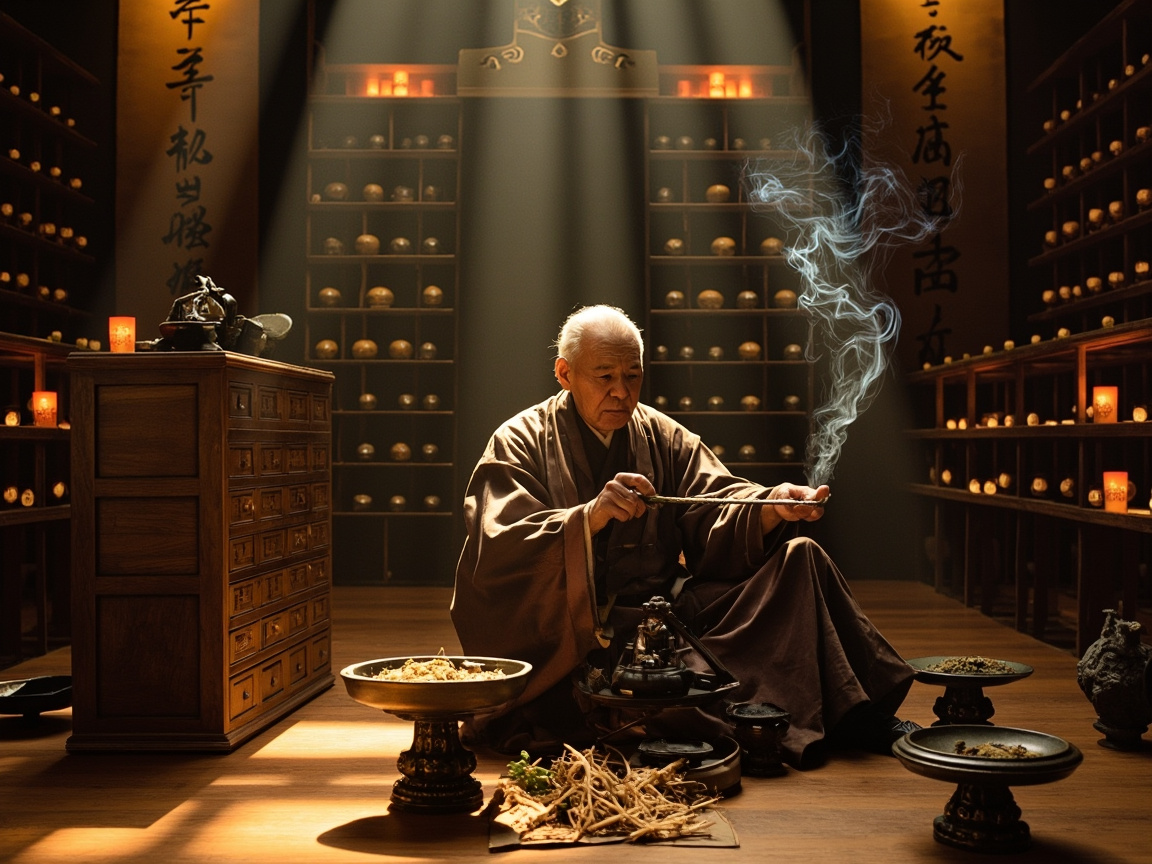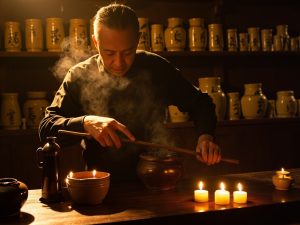Table of Contents
ToggleFu Ling Gui Zhi Bai Zhu Gan Cao Tang VS Wu Ling San VS Fu Ling Gan Cao Tang
Author: Nan Kaiyang Editor: Gu Yuxi Translator: Gu Yuxi
Fu Ling Gui Zhi Bai Zhu Gan Cao Tang
Original Text:
Clause 67: For cold damage, if there has been vomiting or purging, and there is rebellious fullness below the heart, qi rushing up to the chest, dizziness upon standing, twitching of channels upon sweating, a deep and tight pulse, and the body shaking and trembling ; Fu Ling Gui Zhi Bai Zhu Gan Cao Tang is indicated.
Etiological Differentiation:
Deficiency and decline of Middle Yang, with phlegm-fluid in the diaphragm.
Location of Disease Differentiation:
Cold fluid in the Middle Jiao, with water retention in the Spleen and Stomach.
Formula Analysis:
Ling Gui Zhu Gan Tang (Fu Ling Gui Zhi Bai Zhu Gan Cao Tang) serves as a formula to invigorate the Spleen and promote diuresis. Its actions are to unblock Yang and eliminate fluid retention, invigorate the Spleen, and promote diuresis. It is suitable for phlegm-fluid conditions where Middle Yang is not vibrant, and water stagnation forms fluid, leading to rebellious fullness below the heart, dizziness, palpitations, shortness of breath, and difficulty with urination.
It primarily treats Spleen deficiency with water retention, presenting with rebellious fullness below the heart, qi rushing up to the chest, dizziness upon standing, and a deep and tight pulse. Therefore, the formula uses Bai Zhu (White Atractylodes Rhizome) to invigorate the Spleen and cultivate earth to control water.
In the Shang Han Lun, Bai Zhu and Gan Cao (Licorice) are in equal proportions, used to stop rebellious water qi. In the Jingui Yaolue, Bai Zhu is one liang (ounce) more than Gan Cao, used for phlegm-fluid with shortness of breath and to promote urination.
Wu Ling San VS Fu Ling Gan Cao Tang
Original Text:
Clause 73: For cold damage with sweating and thirst, Wu Ling San is indicated. If there is no thirst, Fu Ling Gan Cao Tang is indicated.
Location of Disease Differentiation:
Mild water retention in the Middle Jiao.
Interpretation:
The original meaning of the formula is too concise. Mr. Hu Xishu believed that for the formula where there is no thirst, Fu Ling Gan Cao Tang is indicated, there should be accompanying variant symptoms such as palpitations below the heart, slight shortness of breath, and qi rushing, which are signs of internal water retention, but not as severe as the heavy water retention symptoms seen in the first two formulas. This is due to prolonged retention of cold water in the body, often with cold hands and feet. It should clear water passages and treat water retention below the heart that causes thirstlessness.
Differentiation of the Three Formulas:
From the perspective of the herbal combinations of the three formulas, the proportion of Gui Zhi (Cinnamon Twig) and Gan Cao (Licorice) in clauses 65 and 73 strictly follows the pairing in clause 64, achieving the effects of Gui Zhi Gan Cao Tang in warming and unblocking Heart Yang, and invigorating the Spleen to generate fluids. However, the amount of Fu Ling (Poria), which plays a role in harmonizing, seeping dampness, promoting diuresis, and calming the mind in clauses 65, 67, and 73, progressively decreases from half a jin (catty) to four liang to two liang. The only difference lies in the changes in Bai Zhu (White Atractylodes Rhizome), Da Zao (Jujube), and Sheng Jiang (Fresh Ginger). All three act on the Spleen and Stomach, leading to the following conclusions:
The choice of application depends on the location of water qi in the Sanjiao or different exterior symptoms:
1.Ling Gui Zao Gan Tang (Gui Zhi Fu Ling Gan Cao Da Zao Tang) is the strongest in warming Yang and promoting diuresis. It can warm the Middle Jiao and simultaneously treat rebellious water from the Lower Jiao.
2.Ling Gui Zhu Gan Tang (Fu Ling Gui Zhi Bai Zhu Gan Cao Tang) excels in warming Yang and promoting diuresis, but its effect is limited to the Middle Jiao, treating dizziness and vertigo caused by water stagnation below the heart and water accumulation in the Spleen and Stomach, leading to rebellious water qi in the Middle Jiao.
3.Fu Ling Gan Cao Tang has the lightest dosage and treats mild water retention in the Middle Jiao. It unblocks Yang and promotes diuresis, treating cold hands and feet and palpitations caused by water stagnation below the heart.
4.All three formulas can unblock water passages to achieve the effect of promoting fluid renewal.
Appendix:
From Jingui Yaolue, Chapter 12: Phlegm-Fluid and Coughing: Clause 36: After purgation with Qing Long Tang, if there is excessive salivation, dry mouth, a deep pulse at the cun position, a faint pulse at the chi position, cold extremities, qi rushing up from the lower abdomen to the chest and throat, numbness of hands and feet, a flushed face like drunkenness, and then fluid flowing down to the inner thighs and groin, difficulty with urination, and intermittent dizziness/fainting : administer Gui Ling Wei Gan Tang (Gui Zhi Fu Ling Wu Wei Zi Gan Cao Tang) to treat the rushing qi.
Etiological Differentiation:
Inherent deficiency of True Yang, with dampness throughout the Sanjiao.
I.Gui Ling Wei Gan Tang functions to constrain qi and calm rebellious qi. It is suitable for zhi yin (branch phlegm-fluid) disease where there is inherent deficiency of True Yang in the Lower Jiao, rebellious qi rushing upwards, and exuberant zhi yin in the upper body, leading to a deep pulse at the cun position, a faint pulse at the chi position, cold and numb extremities, qi rushing up from the lower abdomen to the chest and throat, a flushed face like drunkenness, difficulty with urination, and intermittent dizziness/fainting. It appears as a rescue formula for misdiagnosis/mistreatment.
II.This refers to water-fluid stagnation, including dizziness, palpitations, clear and thin sputum, difficulty with urination, and a slippery tongue coating.
III.“Mao” refers to a sensation of the head being wrapped, dizziness and blurred vision, or a hazy consciousness. This indicates damp qi enveloping the brain.
IV.”Flushed face like drunkenness” describes a red complexion with a sensation of tidal heat.
Disclaimer:
The experiences and insights shared above represent the author’s personal usage and understanding, and are provided for reference only as part of academic exchange. Please do not blindly replicate or apply them; any consequences arising from such actions are solely your responsibility. As individual constitutions vary, medication should be tailored accordingly. It is advisable to use such treatments under the guidance of a qualified physician. If you have additional experiences to share, comments and submissions are welcome.
If you appreciate my article, please give it a like.
If you are a generous and affluent individual, please consider making a donation!
Your recognition is my greatest motivation to continue writing—thank you very much!
USD Donation Button —
A RMB donation button is available below.
 微信赞赏
微信赞赏 支付宝赞赏
支付宝赞赏




